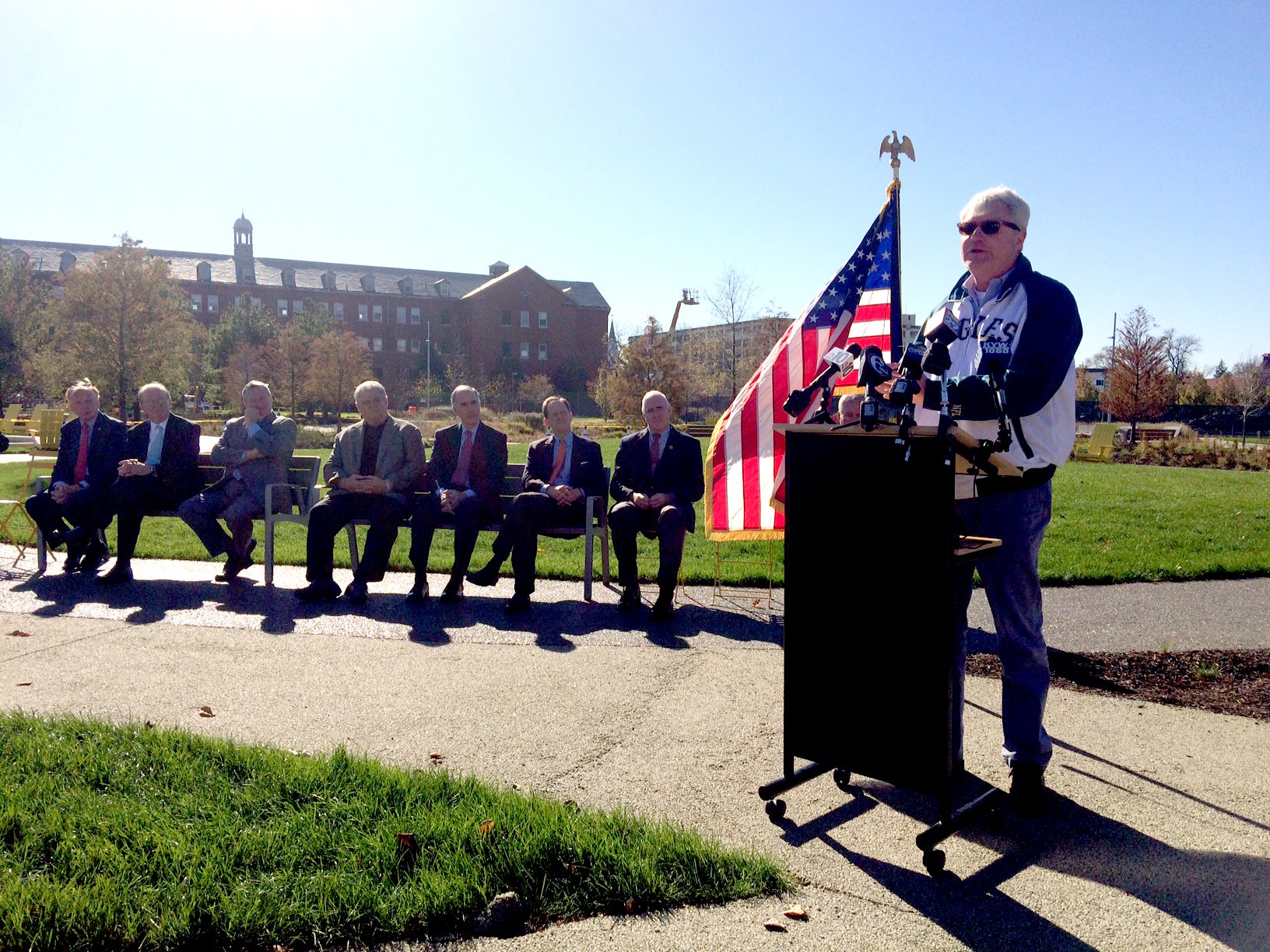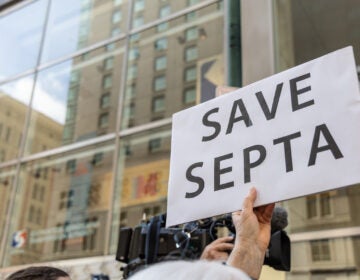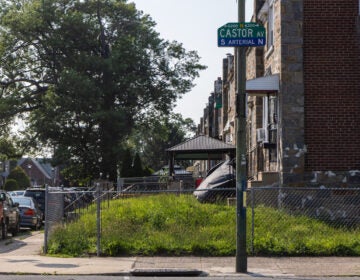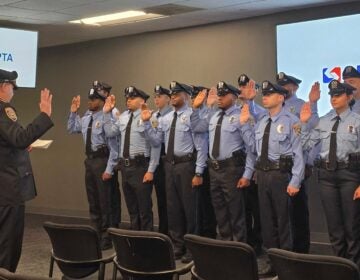Bipartisan group of politicians renew call for Broad Street Line extension to Navy Yard

A bipartisan group of state, local and federal politicians gathered at the Navy Yard today to rally support behind extending SEPTA’s Broad Street Subway Line (BSL) to the growing office park.
Measured in terms of actual progress on the extension project, today’s event was much ado about nothing: it was merely calling for a new feasibility study to replace one published in 2008. That study, which estimated the cost of extending the BSL to the Navy Yard at $370 million, has become outdated in light of the Navy Yard’s 2013 Master Plan and subsequent developments in the area.
However, in symbolic and political terms, today’s event was as you like it for supporters of the Navy Yard expansion. Senators Pat Toomey (R-PA) and Bob Casey (D-PA) spoke in support of the project, as did Rep. Bob Brady (D-PA-1) and Rep. Patrick Meehan (R-PA-7). They were joined by state Sen. John Rafferty (R-44) and state Rep. William Keller (D-184).
Mayor Elect Jim Kenney also spoke, as did Philadelphia Industrial Development Corporation John Grady and Liberty Property Trust CEO Bill Hankowsky. Longtime extension proponent John Dougherty, business manager of the politically powerful IBEW Local 98, was given top billing and spoke last.
Ironically for a press event announcing a new study, Rep. Brady said the time for studies was over: “I’m tired of doing studies after studies and putting money behind studies after studies. We got another $900,000 for another study!”
Brady punctuated his remarks by pointing to Mayor-Elect Jim Kenney and saying: “That’s my study! That’s my study, that’ll get things done.”
The arguments in favor of extending the BSL to the Navy Yard are mainly economic and logistical. Grady said extending mass transit would allow for even more jobs to be located there. Currently, there are around 11,500 jobs at the Navy Yard. Today, Grady said he hoped to one-day see 40,000 – the 2013 Master Plan projected just 30,000. At it’s peak when it operated as a naval shipbuilding base, the Navy Yard had around 47,000 employees working there, who mainly drove. Today, rush hour traffic there is congested, and it will only get worse.
Grady pointed to the Navy Yard Shuttle as proof that the Navy Yard needs mass transit. Since it’s start, ridership on the shuttle, which runs a Center City loop making two stops on Market Street and then throughout the Navy Yard and another loop to-and-from AT&T Station near Pattison Avenue, has risen 400 percent to around 2,000 riders per day, said Grady. The implication: even more would use the subway.
Of course, those figures may be a bit inflated compared to the subway: the Navy Yard Shuttle is free.
The argument against extending the BSL is equally simple: It will be very expensive. In March, PIDC officials told PlanPhilly they use $500 million to ballpark the costs of an extension. Federal funds could cover about half of that, with the rest coming from state, local and private sources.
It’s the same argument used against any major transportation infrastructure project: This costs too much and cheaper alternatives – like simply adding more buses to the Shuttle – could do the trick. Some naysayers would also point out that, currently, a large number of Navy Yard workers live in South Jersey or other locations that preclude taking mass transit. If the Navy Yard had a subway connection, though, many employees could chose to live in areas that were subway accessible. Where you build transportation infrastructure influences where people decide to live.
The difference between this project and some other major proposals – like bringing mass transit to Roosevelt Boulevard or to the City Branch cut/tunnel – is that this once got a bunch of powerful men to sit outside on a warm autumn day and take turns offering supportive platitudes. In short, this project has powerful champions behind it.
Champions like Liberty Property Trust. CEO Hankowsky noted that his company has invested $400 million building offices at the Navy Yard. A perhaps half-billion dollar extension would serve in large part to bolster that investment and help ensure a profitable return. They have plenty of reasons to encourage local politicians to support this project, which would act like a subsidy for Liberty’s investments. There’s no similarly well-heeled backer looking to boost property values along Roosevelt Boulevard through the introduction of mass transit.
As Rep. Brady said today, “You need a bully.”
“I mean that very, very favorably. You need someone who will run through a wall,” to complete major civic projects. Brady said John Dougherty was that person. Having labor and private developers aligned behind the project certainly helps it likelihood for success.
Hankowsky also noted that mass transit would make residential properties at the Navy Yard more attractive. PIDC officials have been negotiating with the U.S. Navy for months now, trying to lift restrictions that prohibit residential properties at the Navy Yard. Adding residential properties would also, conversely, make the BSL extension more attractive, adding another set of potential riders.
SEPTA CFO Rich Burnfield praised state legislators for passing Act 89 in 2013. He then added: “We would also like to acknowledge the leadership of senators Toomey and Casey, and Representative Meehan and members of Pennsylvania’s congressional delegation, as the two houses of Congress have recently passed long term transportation funding at the federal level.”
Senators Casey and Toomey both voted against that bill.
SEPTA, who will oversee the study with input from other state and local transportation agencies, expects to hire a consulting firm to conduct the updated feasibility study. SEPTA officials said they expect the study to be finished sometime in mid-to-late 2016.
After this study, there would still need to be an environmental study and then a design phase before shovels could break ground. Even if support lines up and funds are secured, it would take years before construction could begin, and then years more to complete the work.
WHYY is your source for fact-based, in-depth journalism and information. As a nonprofit organization, we rely on financial support from readers like you. Please give today.






